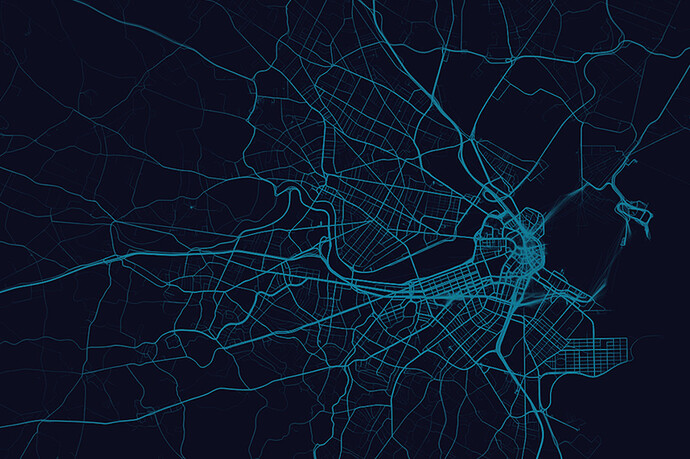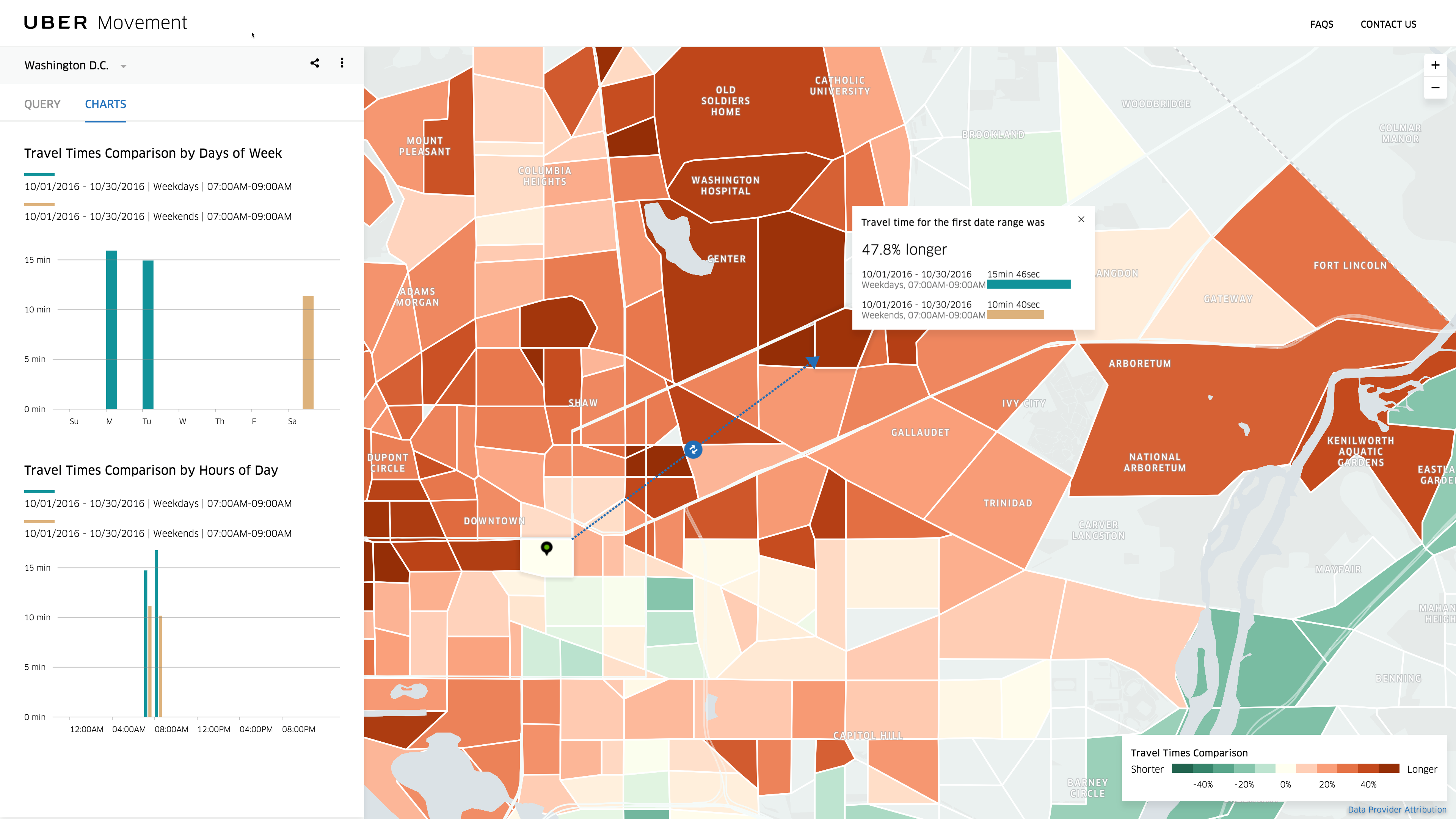Ridesharing is a relatively new platform that is now so woven into the fabric of society that, just like the smartphone, many users do not remember or don't want to remember what it was like before they had such services. All this happened in a relatively short time, only 6 years! Unlike the slow transferring from old technology to new, back in the 19th and 20th century, when steam engines replaced canal barges and large land freight carriages, and automobiles replaced horses and buggy. Those changes took decades, even the introduction of electricity and telegraph took a few decades. Modern technology disperses and integrates immediately, within a year the concept is already accepted, and within a few years, it is inseparable from the very fabric of life.
However, with this quick introduction and change in lifestyle comes also a change in consumer spending and habits. It also leads to changes in how people live within society, so much so, that cities and home living become totally different. These changes are usually well documented since the information is freely available to researchers and government. However, ridesharing is a very private affair. Companies tend to keep their inside information very secret, which is actually quite hilarious when you consider the fact that all the companies are linked in one big cartel. Uber, Didi, Lyft, Grab, Ola and more share directors and investors. Information is quite free between each company, yet it is considered to be totally private from the public.
Cities and Governments need the ridesharing data; they need to understand the changes and emerging patterns of transportation and income based on the rideshare economy. This is not a small economy, it is truly global, where millions of car owners are also ridesharing drivers. Not only that, but hundreds of millions occur every week. In China alone, over 25 million rides happen every day, which means that this covers over 150 million rides a week. These vast numbers of rides mean that either there are more vehicles on the roads, or that there is a migration from taxi's and other services to rideshare driving, or perhaps both. We should also factor in parking spaces, traffic, air pollution, income, and distribution of wealth, and many more sectors related questions.
Cities are also concerned with focused questions such as how the new industry has affected public transport, congestion in the inner city, and how taxi services have been replaced, and how the new replacements can be regulated for safety as well as accountability. Airports are trying to handle the change where taxis used to be the main focus of land transportation, now its rideshare companies.
The Uber Lyft
It seems that both Uber and Lyft don't want to share their information with decision makers in cities or states. One of the main reasons is based on the access such data could have on the effectiveness of their app, or the negative impact it could have on funding sources. Another issue is accessibility to propriety information that could come from accessing data at its source.
The deputy director for technology, data and analysis at the San Francisco County Transportation Authority Joseph Castiglione told the media that "There's a lot of talk about wanting to be collaborative, but when it comes time actually to walk the walk, a lot of times no data is forthcoming, or the data that's forthcoming isn't useful in any way."
Because of this lack of information, many researchers end up using survey data that was collected by themselves or from other sources, but not official information from Uber or Lyft. These sources of information are partial at best and do not give an accurate picture of what is happening. In other cases, university researchers have come up with some interesting ways to reach reliable data; one such case was when a university sent hundreds of students out to take rideshares around a city, collecting the information on a detailed format sheet. In 2016, data scientists from Northeastern University set up a rideshare sonar; they pinged Uber and Lyft API's every 5 seconds to get an accurate read of where the cars were situated on the map of San Francisco. This gave them a more accurate yet not so comprehensive birds-eye view of how rideshare cars were affecting traffic.
Not all studies provide accurate results, the recent MIT flop, failed to provide an accurate reason why drivers earn as little as $3.35 per hour since they relied on old data without actually analyzing real live information. Had MIT used standard driving information that is readily available, such as taking the mileage and hourly usage of rideshare driving surveys and then applying basic informatics, they would have reached the same conclusion in a more scientifically proven way. As of now, Stephen Zoepf, the main researcher has fumbled and come out with a new finding that is so far from the truth, overturning his original findings due to pressure from Uber. One such pressure came from Uber CEO Dara Khosrowshahi's tweet "MIT = Mathematically Incompetent Theories (at least as it pertains to ride-sharing)."
While researchers have tried to prove the findings wrong, all of them never take into account the actual cost of the car; the car purchase price. Even now with many researchers coming to Uber's side, and trying to prove that the net income is closer to $10 per hour, Zoepf backed down and stated that he also find the income closer to $10. Unlike other data sources, the actual earnings per driver are relatively easy to calculate, they only require the gross earnings and a standardized calculation of expenses. Again, remember the car cost, what we call in the industry the Capex. (Capital Expenditure)
When trying to evaluate other data, data that has an impact on traffic, air pollution, car types and driving options, researchers are faced with a brick wall. The only city you can consider getting a bit of information from is NYC where the Taxi and Limousine Commission forces Uber and Lyft to turn over data in exchange for licensing to drive in their area.
Uber did introduce in January 2017 their Uber Movement app for cities, but it has yet to be used for truly meaningful information and the site is lacking in any real data. Its more of a red-herring, just put there for picture worthiness, in reality, it doesn't provide anything of value.
Uber has its own research team, headed by Andrew Salzberg, who told the press that "We're actively looking in a bunch of different directions to be able to share data in different ways and for different purposes." Which is an improvement in stance and is better than Lyft's silence on the subject.
The biggest issue that researchers have with Uber and Lyft are the speed in which society has changed. Most changes take time, and during the transition period, a lot of data is shared t help improve the new technology through collaborative research into its impact on society. However, with ridesharing, there is a big wall, and the speed of change combined with the privacy of data has made this particular evolutionary step problematic. Add to this the research into driverless cars, (AV's), and you have a future where the impact of AV's is unknown since the current impact of ridesharing is as yet not fully understood.
The only possible solution is the NYC approach, where regulators change how ridesharing is approached. No longer an "app" but an electronic taxi platform, where the rideshare company must conform to the same demands that taxi ranks conformed to in the past. This whole "Kalanick" approach to law and order made by the industry has to be broken. It seems that regulators are actually scared of Uber. The fact that the company has continued to lambast the regulators in every state and reached levels of forced cooperation is troubling. Sure, it helps change the transport sector, but why do the regulators let such companies retain their "data" privacy when they affect the public in such a manner. While Coca Cola's recipe is a secret, the FDA knows the recipe very well otherwise Coca-Cola would not be sold in the US. This recipe has remained a secret for decades, which means that the FDA is good at keeping secrets. If this is the case, then Uber and Lyft can be regulated too, and their data can be shared with regulators and kept secret. Only allowing the relevant information regarding traffic and air pollution to be used for research purposes.
Conclusions
The gig economy has changed how we do business; it is the next step in decentralized industry, a border-less worldview. When adding the blockchain into this mix, we are getting a picture of a future where everyone has access to everything, but no one knows anything. The only way to remove this oxymoron situation is to regulate ridesharing and make all relevant data available fully. If the FAA can control air traffic the way it does, its time the regulators stepped in and made Uber and Lyft accountable in the same way.
NYC has shown the way; its time other cities started to follow suit and make data sharing a mandatory requirement for allowing rideshare driving in the city.


